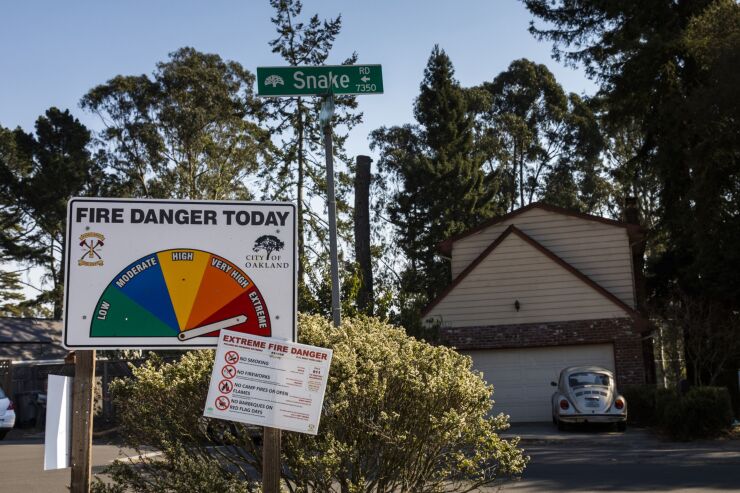
These departures mirror similar insurer decisions to stop issuing new policies in the hurricane-impacted states of Florida and Louisiana.
"Several forces — including construction costs that outpace
However, other private insurers had chosen to stay in these markets. In June, Farmers Insurance told Digital Insurance that "while we continue to monitor the changing developments in the California insurance marketplace, we remain actively engaged with the California Department of Insurance and others interested in improving the availability of property insurance in the state."
This week, according to news reports, Farmers announced that it would
Technology may be playing a role in some of these decisions. In 2021,
"Regulators, insurance carriers and homeowners need transparent models that they can trust to allocate the cost of climate risk," said Attila Toth, CEO of ZestyAI. "Smart, forward looking, transparent models… can really help insurance companies and regulators understand wildfire risk at the individual property level and can help fairly allocate the cost of it."
CSAA Insurance Group also announced to the
"One reason why insurance carriers make [different] decisions is their reality is not the same," Toth said. "Their books are not the same. The makeup of their book, their exposure to the risk is not the same. The reinsurance contracts in place are not the same. Their understanding of the risk is not the same. Their own balance sheet strength is not the same. So everybody has those different factors that allow them to look at this situation through a different lens."
What is the same for every property and casualty insurance company, however, is a
"Every five years we have an event that used to happen only every 30 years," said Paul Walsh, CEO of weather data company Meteomatics. "Insurance companies keep track of it because that's their business. They know very well that there's increased risk when you've seen increased frequencies of events that are going to cost a lot of money and so they're being smart about it."
Walsh explained that in most cases, insurers "use historical inputs in terms of defining risks such as historical weather data [and] historical risk data." However, historical models are now becoming increasingly unreliable.
"As the climate changes, the problem with using historical data to create the statistics is becoming fraught," Walsh said. "If the climate isn't changing, you can use historical data, historical analytics to get a sense for the future risks. But as the climate changes, we're literally in a period of moving averages. As the averages change in terms of the risk factor, it changes the entire calculation from a financial perspective."
As historical data is becoming less effective for building risk models, insurers such as Farmers and CSAA are turning to artificial intelligence to make predictions about future wildfire risk. Those predictions are then sourced to insurers to further inform their risk decisions.
"We use AI… for extracting structured data from unstructured sources, such as an image from a low flying aircraft or from a satellite or a building permit or topography information," Toth said. ZestyAI uses trained predictive models, known as gradient boosted machines, to predict both the frequency and the severity of a wildfire event.
"A layer of artificial intelligence help[s] make better decisions and more scalable decisions," Walsh said. He believes that insurers should not use AI to "make the forecasts or create the data, but to make better and more informed decisions on top of that data and on top of the decisions that they're looking to support… That layer of artificial intelligence is really the decision engine that will over the years become more and more prevalent, and that's how it all ties together."
Experts in the industry attribute the increased risk of wildfires to climate change and its effects. Multiple press releases regarding California wildfire coverage also cited climate change as a concern.
The costs of damage claims for properties impacted by severe natural disasters is also going up, especially in the state of California.
"The data tells you that climate risk stemming from
As the summer continues on with
As a last resort, the
"There is a crisis situation in California today," Toth said. "Tough choices need to be made both at the carrier side and also for regulators in order to keep the market healthy."
This story has been updated from its original version to reflect new developments.







